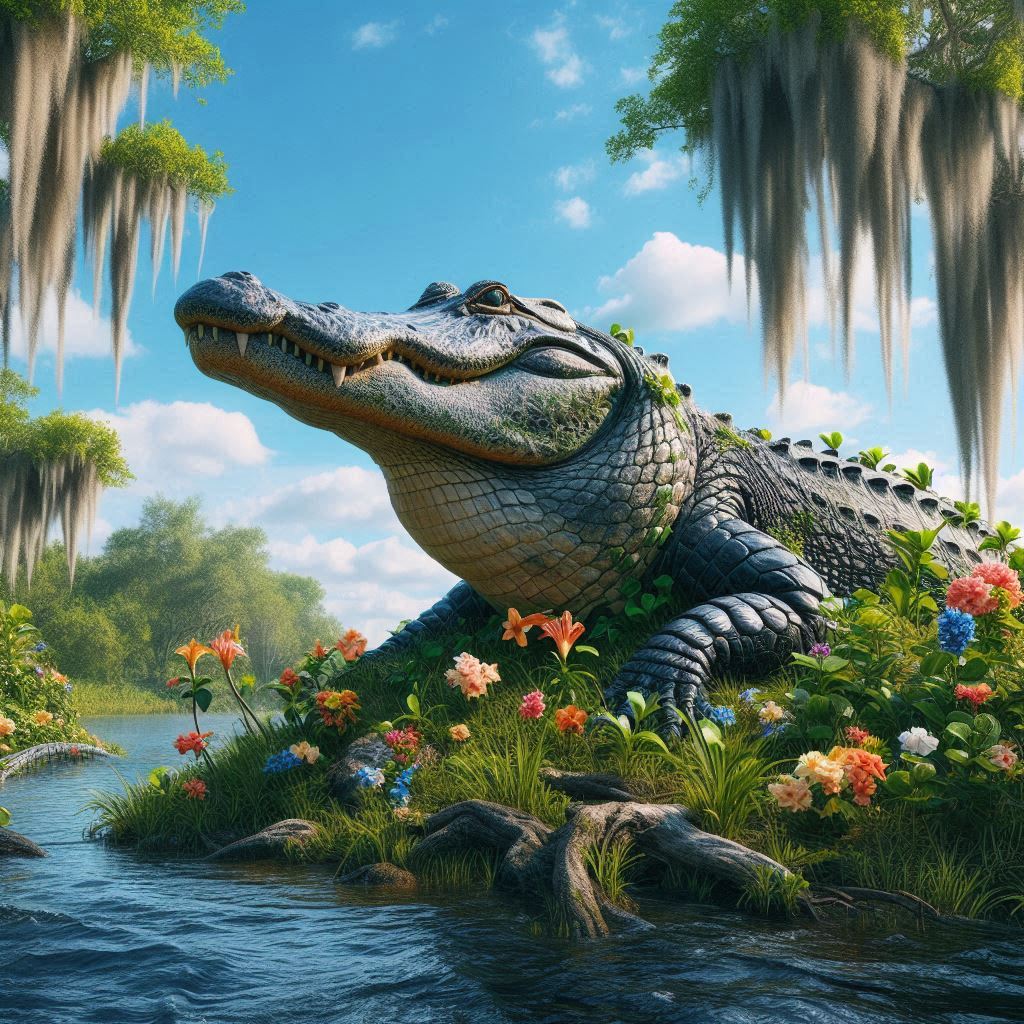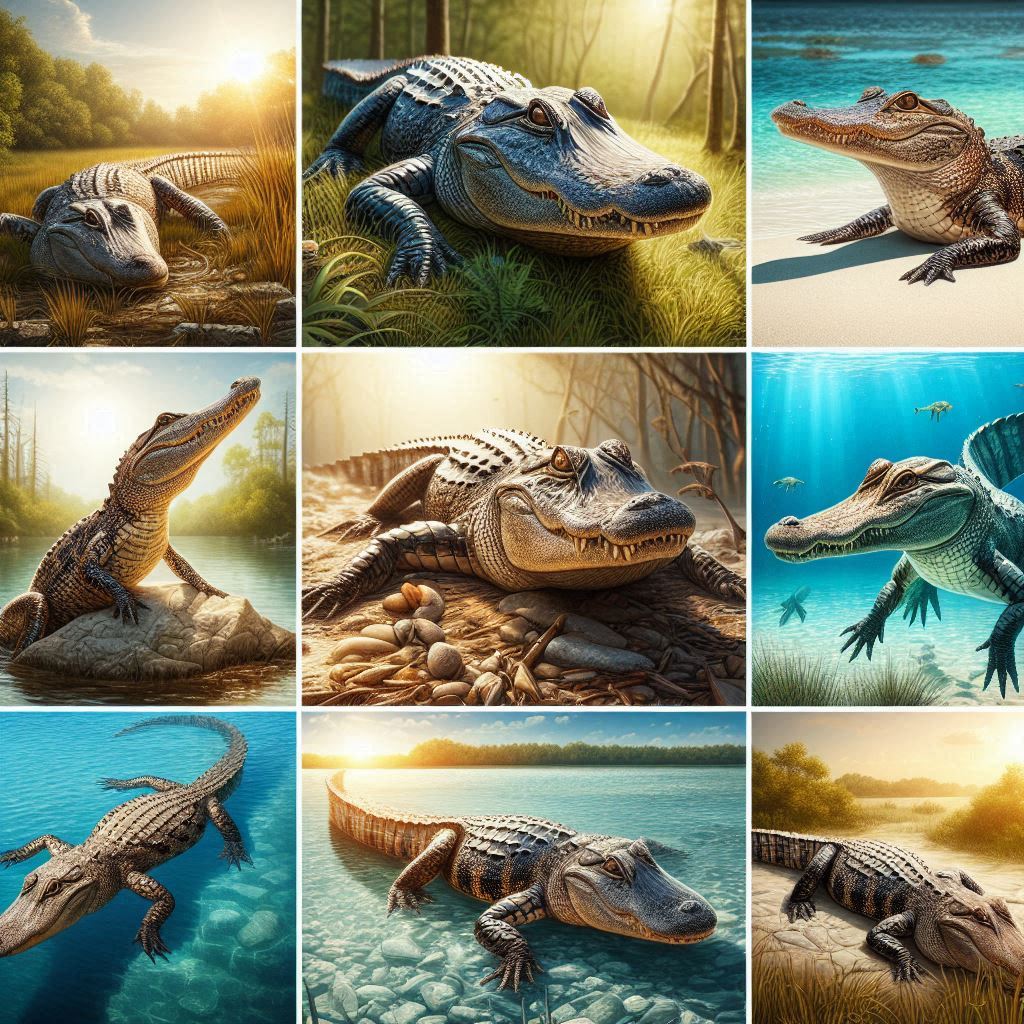🐊 Alligator – General Overview
The alligator is a large, carnivorous reptile best known for its armored body, powerful bite, and semi-aquatic lifestyle. Belonging to the order Crocodylia, alligators are often confused with crocodiles, though they differ in snout shape, behavior, and habitat. Alligators have been on Earth for over 37 million years and are often seen as “living fossils.”

📊 Classification
- Kingdom: Animalia
- Phylum: Chordata
- Class: Reptilia
- Order: Crocodylia
- Family: Alligatoridae
- Genus: Alligator
- Species:
- Alligator mississippiensis (American Alligator)
- Alligator sinensis (Chinese Alligator)
🧬 Physical Characteristics
- Size:
- American Alligator: Males up to 13–15 ft (4–4.5 m); females smaller
- Chinese Alligator: Smaller, about 5–7 ft (1.5–2.1 m)
- Weight: Up to 1,000 lbs (450 kg) for large males
- Color: Dark grayish-green or black with lighter underbelly
- Skin: Armored with tough scales and bony plates (osteoderms)
- Snout: Broad, U-shaped (vs. crocodile’s V-shaped snout)
- Teeth: 70–80 sharp teeth; designed for gripping and tearing

🌍 Habitat
- American Alligator: Southeastern U.S. – freshwater swamps, marshes, rivers, lakes
- Chinese Alligator: Yangtze River basin, now limited to small reserves
- Prefer warm, slow-moving freshwater
- Occasionally found in brackish water but not true saltwater dwellers
🍴 Diet
- Carnivorous
- Diet varies by size:
- Juveniles: Insects, fish, amphibians
- Adults: Fish, turtles, birds, mammals, and carrion
- Opportunistic feeders; may eat pets or livestock if near human settlements
- Known for “death roll” to subdue large prey

🧠 Behavior
- Generally solitary and territorial
- More active in warmer months; may become sluggish or enter brumation in cold
- Use “bellowing” calls to communicate, especially during mating season
- Excellent swimmers; also capable of short bursts of speed on land
- Create “gator holes” in dry seasons to hold water and attract prey
🐣 Reproduction
- Breeding season: Spring (warmer months)
- Mating behavior: Bellowing, head-slapping on water
- Females build nests from vegetation and lay 20–50 eggs
- Incubation: ~60–70 days
- Temperature-dependent sex determination:
- Warm temps = males; cooler temps = females
- Females guard the nest and help hatchlings reach water
- Juveniles stay with mother for months, sometimes years
📉 Conservation Status
- American Alligator:
- Once endangered due to overhunting and habitat loss
- Now least concern thanks to strict protection and population recovery
- Chinese Alligator:
- Critically endangered with fewer than 200 in the wild
- Threatened by habitat destruction, pollution, and human development
- Conservation programs are active in China to reintroduce populations

🌟 Fun Facts
- Alligators can live 35–50 years in the wild; over 65 years in captivity
- They replace teeth throughout their lives (up to 2,000–3,000 teeth in a lifetime)
- Alligators play a key role in wetland ecosystems as apex predators
- Their “gator holes” benefit many other species during droughts
- Known to use tools (like placing sticks on their snouts to lure birds during nesting season — rare in reptiles)
- The American Alligator is Florida’s official state reptile